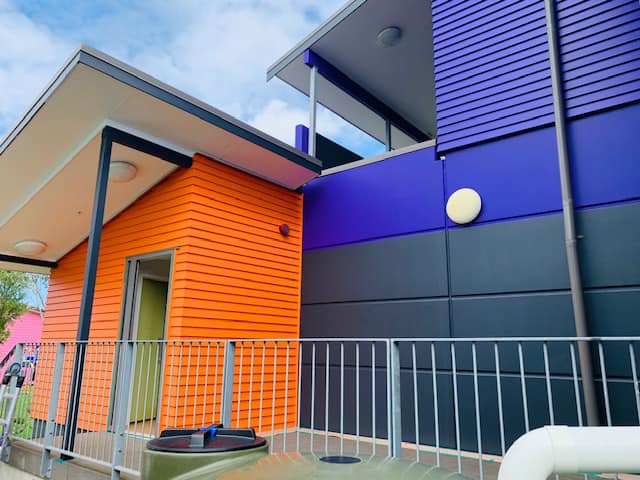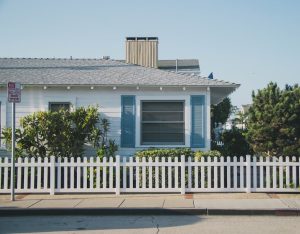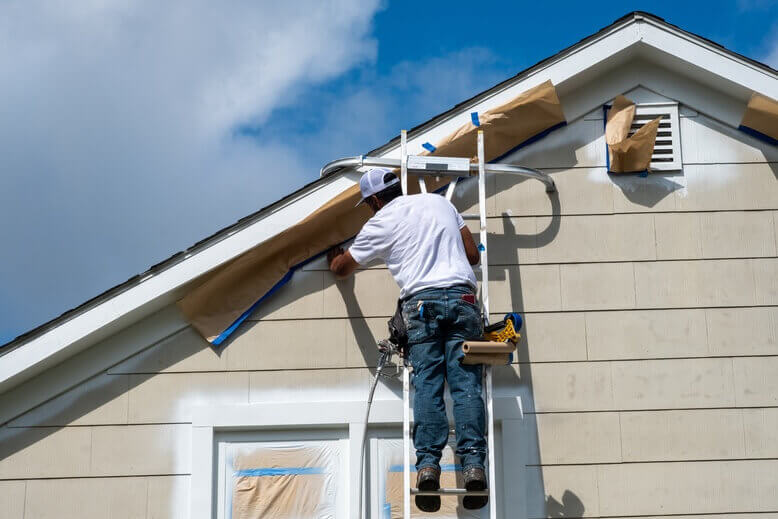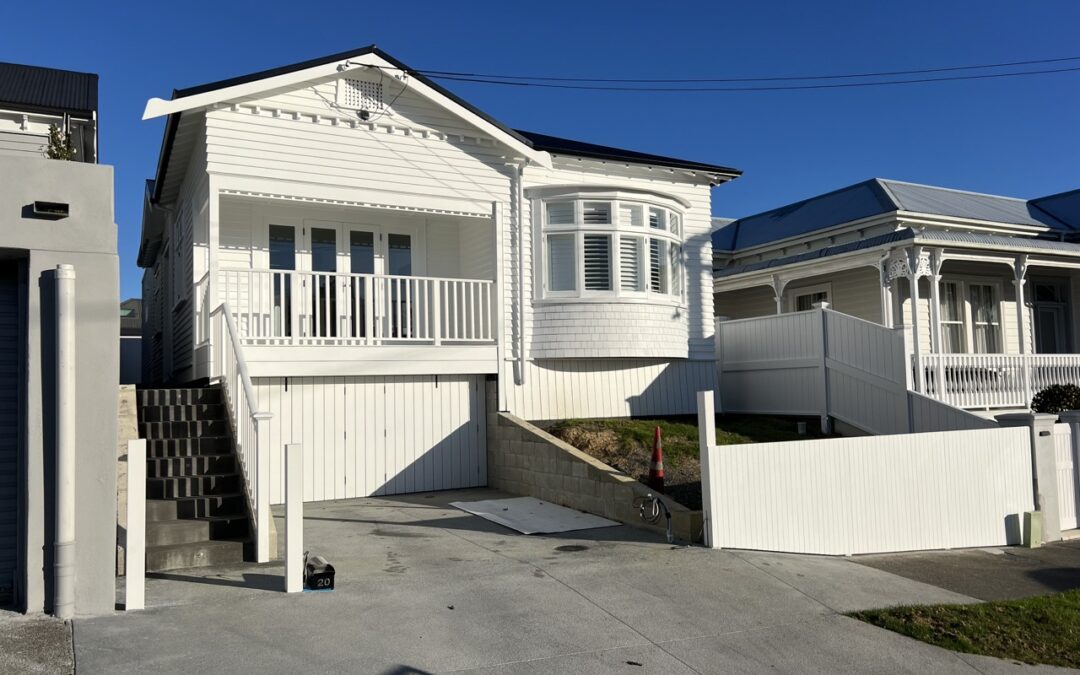Auckland’s weather makes exterior painting tricky. The air is often humid, which traps water under the paint. Regular rain makes it hard to paint on wet walls. Strong sunlight fades colours and cracks paint over time. Because of this, using the right tools and paint is very important. Knowing how weather impacts exterior painting helps keep your home safe and looking great.
Auckland’s Climate and Its Impact on Exterior Painting

High Humidity and Moisture Challenges
Auckland’s air is often very humid, which makes painting harder. Moisture can get into walls, stopping paint from sticking well. If you paint on damp walls, the paint might bubble or peel later. This makes the paint job less durable and needs fixing often.
Tip: Always check if your walls are dry before painting. A moisture meter can help you know if it’s ready.
Humidity also helps mould and mildew grow, which looks bad on walls. These problems harm both the paint and the health of your walls.
Frequent Rainfall and Its Effects on Paint
Auckland’s regular rain makes it hard to plan painting projects. Rain can ruin fresh paint, causing streaks and uneven spots. Even after rain stops, walls can stay wet for a long time. Painting on wet walls leads to poor results and patchy finishes. To avoid this, watch the weather forecast carefully. Pick a few dry days so the paint can dry properly.
- Rain-related challenges include:
- Paint takes longer to dry.
- Paint might not last as long.
- Hard to get a smooth finish.
Note: If rain is likely, use weather-proof paints made for Auckland’s wet weather.
UV Rays and Sun Exposure in Auckland
Auckland’s strong sunlight can damage paint just like rain and humidity. Too much sun makes paint fade, crack, and peel. Darker colours fade faster under bright sunlight. Sunlight also weakens the paint’s protective layer, leaving walls at risk. Over time, this can lead to expensive repairs. To stop UV damage, choose paints with UV-resistant features. These paints are made to handle strong sunlight and keep their colour longer.
Tip: Lighter colours reflect sunlight better and fade less. Think about this when picking your paint colour.
Seasonal Weather Patterns and Temperature Changes
Auckland’s weather changes with the seasons, making painting tricky. Summer days are warm and long, but heat dries paint too fast. This quick drying can cause cracks and uneven finishes. Winter is cooler and wetter, making paint dry slowly. Wet walls in winter can lead to peeling and bubbling paint. Spring and autumn seem better for painting but have issues too. Spring often has sudden rain that can ruin fresh paint. Autumn nights are cooler, which slows the drying process. Day and night temperature changes also affect paint. If nights are much colder, paint may not stick well. Over time, this weak bond can cause cracks and peeling.
Tip: Choose stable weather for painting. Look for dry days with mild temperatures.
Humidity also changes with the seasons, adding more challenges. High humidity in summer and spring traps water under paint. Low humidity in winter makes paint dry too slowly. Both can weaken your paint job. For the best results, adjust your painting to the weather. Use paints made for Auckland’s changing conditions. Clean and prime surfaces properly to help paint last longer.
How Auckland’s Climate Affects Paint Performance

Durability and Longevity of Exterior Paint
Auckland’s weather can shorten how long exterior paint lasts. Wet air and rain weaken the paint’s protective layer over time. This makes it wear out faster. Strong sunlight also damages paint. It breaks down the paint’s structure, making colours fade and look dull. To make paint last longer, pick high-quality paints for tough weather. These paints have special ingredients to fight water and sunlight damage. Cleaning and fixing small issues regularly can help your paint stay strong.
Tip: Check your painted walls every year. Fixing small problems early can save money later.
Adhesion Issues Caused by Moisture
Water is a big problem for painting outside in Auckland. Wet walls make it hard for paint to stick properly. This causes bubbles, peeling, and flaking. Humid air makes it worse, as water stays trapped under the paint. Before painting, make sure the walls are fully dry. Use a primer made for damp conditions to help paint stick better. Weatherproof paints work best for Auckland’s rainy weather.
- Signs of poor adhesion:
- Paint coming off in big pieces.
- Bubbles forming under the paint.
- Uneven or patchy paint layers.
Fading, Cracking, and Peeling Due to UV Exposure
Auckland’s strong sunlight makes paint fade faster. Dark colours lose their brightness quickly. Sunlight also dries out paint, causing cracks and peeling. These problems make your home look bad and can harm the walls underneath. To stop sunlight damage, choose paints with UV-resistant features. These paints keep their colour and stay flexible in bright sun. Lighter colours are a smart choice because they reflect sunlight and fade less.
Note: Adding a protective topcoat gives extra defence against sunlight damage.
Mould, Mildew, and Other Moisture-Related Problems
Auckland’s humid weather makes it easy for mould and mildew to grow. These fungi not only make walls look bad but also weaken paint. If ignored, they can cause serious damage to your home’s exterior. Mould and mildew show up as dark spots or patches on walls. They grow fast in damp places, especially where sunlight is limited. Shady or poorly ventilated areas are more likely to have this problem. Moisture trapped under paint can also help them grow, causing peeling and bubbling. To stop mould and mildew, prepare your walls well before painting. Use a cleaning solution that kills fungi. Scrub off any mould to stop it from spreading under new paint. After cleaning, let the walls dry completely. Picking the right paint can help too. Choose paints with anti-mould features. These paints have special ingredients to stop fungi from growing. Weather-resistant paints are also a good option as they protect against moisture. Check your walls often to keep mould and mildew away. Look closely during humid months for any signs of fungi. Clean affected spots quickly to avoid more damage. Acting early keeps your home looking nice.
Tip: Cut back plants and trees near your house to improve airflow. Good ventilation reduces moisture, making it harder for mould and mildew to grow.
By fixing these problems, your exterior paint will last longer and look better.
Practical Tips for Successful Exterior Painting in Auckland

Picking the Right Seasons for Painting
Choosing the best season is key for painting success. Summer has long days, helping paint dry faster. But hot weather can make paint dry too quickly. This may cause cracks or uneven finishes. Winter is often cold and wet, which makes it bad for painting. Spring and autumn are usually better for painting projects. These seasons have mild temperatures and less rain. Plan your work during dry weather to help paint dry properly.
Tip: Check the forecast before you start. Look for three dry days with mild temperatures. This helps paint stick well and dry evenly.
Getting Surfaces Ready for Auckland’s Weather
Good preparation makes paint last longer. Auckland’s wet and humid weather means walls must be clean and dry. Dirt, mould, and mildew stop paint from sticking properly. Wash walls with a pressure washer or cleaning solution to remove dirt. Scrape off old, peeling paint. Sand the surface to make it smooth for new paint. Let walls dry completely after cleaning. Use a moisture meter to check if they’re ready. Apply a primer made for damp conditions to help paint stick better and protect against moisture.
Note: Shady or poorly ventilated areas need extra care. These spots often have more mould and mildew.
Choosing Paints That Resist Auckland’s Weather
Picking the right paint protects your home from tough weather. Use weather-resistant paints made for outside walls. These paints handle humidity, rain, and sunlight well. UV-resistant paints stop fading and cracking caused by strong sunlight. Anti-mould paints prevent fungal growth, keeping walls clean. If your home is near the coast, choose paints that resist salty air.
Tip: Lighter colours reflect sunlight better. They fade less and absorb less heat.
Adding a topcoat gives extra protection. It seals the paint, making it stronger against moisture and sunlight. This helps your paint last longer and look better.
Thinking About Coastal Weather for Exterior Painting
Living close to Auckland’s coast brings special painting problems. The salty air and strong winds can damage paint faster than inland areas. It’s important to think about these issues to protect your home and keep it looking good.
How Salt Air Affects Paint
Salt in the air sticks to walls and harms paint over time. This can cause peeling and flaking, showing the surface underneath. Salt also pulls in moisture, which can make paint bubble or crack. To fix this, clean your walls often to remove salt. Wash the outside with mild soap and water before painting. This helps the paint stick better and last longer.
Tip: Use paints made for coastal areas. These paints fight salt damage and protect against wear.
Problems from Wind and Scratches
Coastal winds carry sand and dirt that scratch painted walls. Over time, this makes the paint weaker and less shiny. Strong winds can also cause uneven drying if dust lands on wet paint. To avoid this, paint on calm days when the wind is gentle. Add a strong topcoat to protect the paint from scratches and damage.
Moisture and Dampness by the Coast
Coastal places often have more humidity, trapping water under paint. This can lead to mould, mildew, and peeling. Make sure walls are fully dry before painting. Weatherproof paints with anti-mould features can stop these problems. These paints are made to handle the damp air near the coast.
-
Tailored Staff UK is your trusted agency to Hire a Nanny anywhere in the UK.
Picking the Best Paints and Finishes
For coastal homes, choose paints that resist salt, wind, and water. Look for weatherproof and UV-resistant paints to protect against Auckland’s tough coastal weather. Lighter colours work well for coastal homes. They reflect sunlight and fade less, keeping your home looking fresh. Adding a topcoat makes the paint stronger and gives extra protection.
Note: Check your paint every year for damage. Fix small problems quickly to keep your home looking great.
By planning for coastal weather, your painting project will last longer and look better.
Professional From RNF Construction vs DIY Exterior Painting in Auckland

Benefits of Hiring Professional Painters From RNF Construction
Hiring professionals from RNF Construction has many advantages. We have the skills to give your home a great finish. Our experts know Auckland’s weather and pick the best materials for lasting results. We also use special tools that make the job quicker and more accurate. Time is another big reason to hire them. Painting a house takes a lot of time, especially if you’re not experienced. Our professionals work faster and finish within a set schedule. This lets you focus on other things while they do the hard work. Safety is also very important. Painting outside often means working on ladders or at heights. Our professionals are trained to follow safety rules, lowering the chance of accidents.
Key Considerations for DIY Painting Projects
If you like doing things yourself, DIY painting can be fun. But it needs good planning and preparation. First, check your walls for damage. Clean them and fix any problems before painting. This helps the paint stick better and last longer. Picking the right paint is very important. Auckland’s weather needs paints that resist rain, humidity, and sunlight. Spend more on good-quality paints to avoid repainting often. Managing your time is also key. Painting usually takes longer than you think, especially for beginners. Plan your work during dry weather to avoid delays. Don’t forget about safety. Use strong ladders and wear safety gear when working high up. Take breaks to stay alert and avoid mistakes or accidents.
Note: DIY painting can save money but needs effort and care. If unsure, ask a professional for advice.
Auckland’s weather needs careful planning for painting outside. Humidity, rain, and sunlight can make painting harder. Use weather-proof paints and paint when the weather is steady for better results.
Tip: Clean and check your walls often to keep them in good shape.
Knowing these weather problems helps you choose wisely. With good planning, your home can stay nice and protected for a long time.

